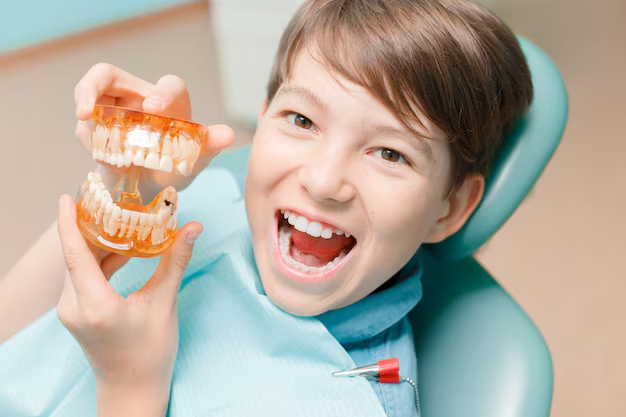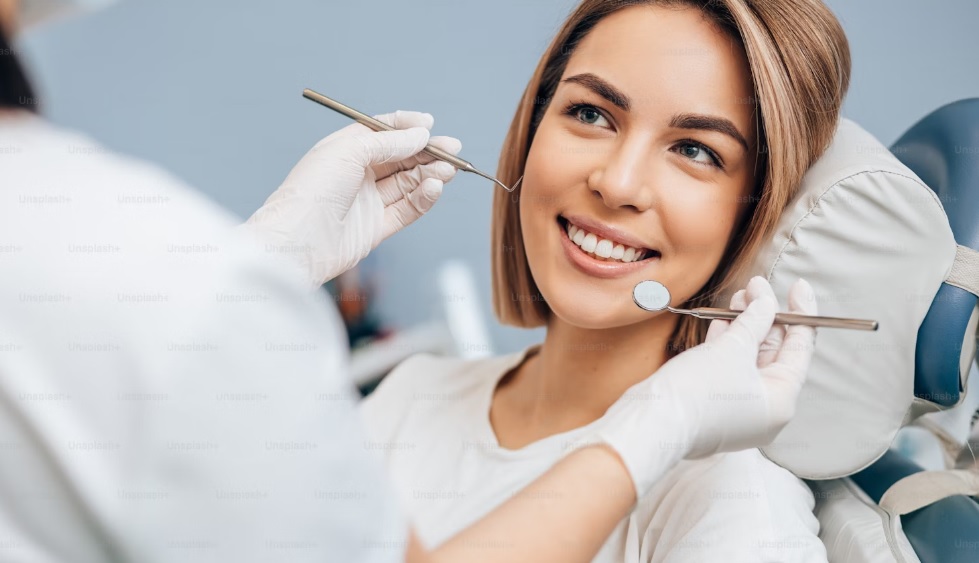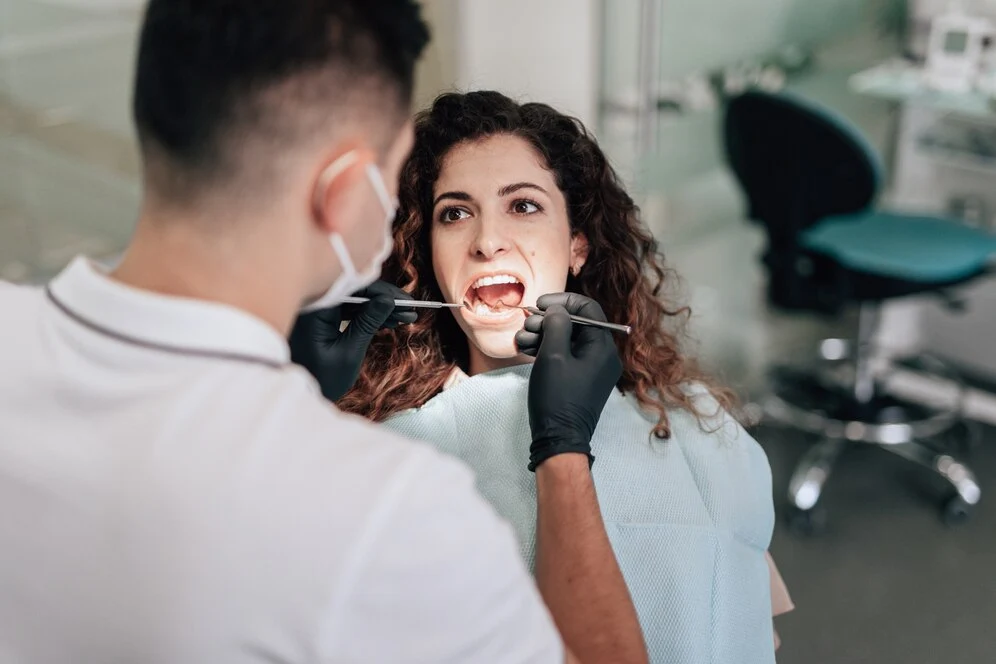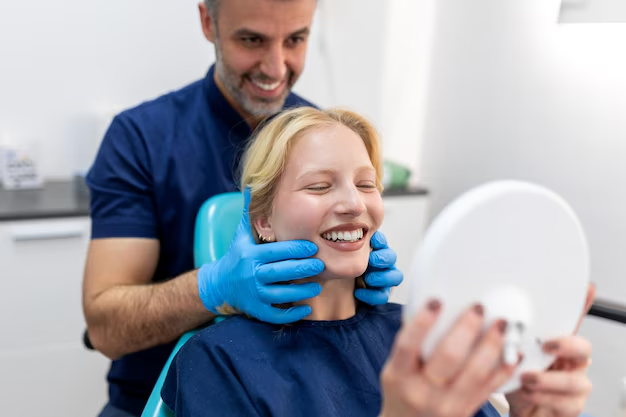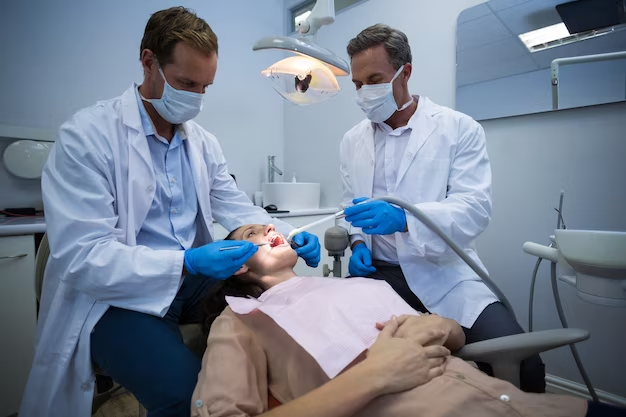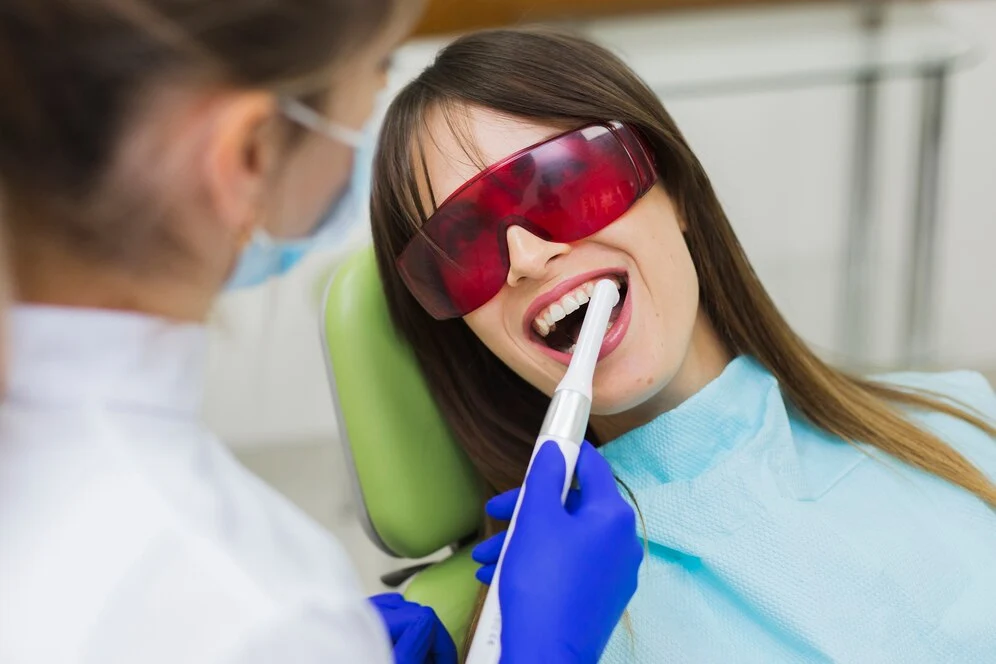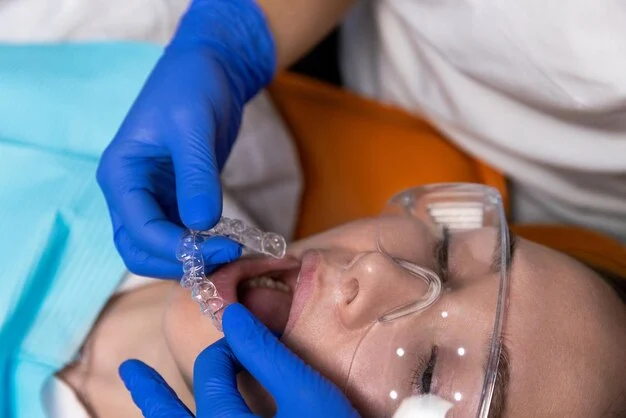What is Invisalign?
Invisalign is a modern orthodontic treatment that uses clear, removable aligners to gradually straighten teeth. Unlike traditional metal braces, Invisalign aligners are nearly invisible, offering a discreet way to improve your child’s smile. These aligners are custom-made for each patient, ensuring a perfect fit and optimal results. As your child progresses through the series of aligners, their teeth will be gently and precisely moved into the desired position.
Why Choose Invisalign for Kids?
Invisalign is not just for adults. More and more parents are choosing Invisalign for their children due to its numerous benefits, including improved oral hygiene, comfort, and a boost in self-esteem. The aligners are easy to remove, allowing kids to maintain their regular brushing and flossing routine, which is crucial for their dental health. Because Invisalign aligners are smooth and plastic, they don’t cause the same level of irritation or discomfort that metal braces often do. This makes it easier for kids to adapt to wearing them.
Benefits of Invisalign for Kids
Improved Oral Hygiene
One of the standout benefits of Invisalign is that the aligners are removable. This means your child can continue to brush and floss their teeth without any obstructions, leading to better oral hygiene throughout the treatment process. Since there’s no need to navigate around brackets and wires, kids are less likely to experience plaque buildup, gum disease, or tooth decay during their orthodontic treatment.
Comfort and Convenience
Traditional braces can cause discomfort due to the metal brackets and wires. Invisalign aligners, made from smooth plastic, are far more comfortable and less likely to cause irritation. Plus, they can be removed during meals and activities, making them incredibly convenient. Kids can enjoy their favorite foods without worrying about damaging their braces, and they can easily remove the aligners for sports or playing musical instruments, ensuring that their lifestyle remains uninterrupted.
Boosted Self-Esteem
Wearing braces can sometimes affect a child’s self-confidence. Invisalign’s clear aligners are almost invisible, helping kids feel less self-conscious about their orthodontic treatment. The discreet nature of the aligners means children can smile confidently, without the stigma often associated with metal braces. This boost in self-esteem can be especially important during the formative years when children are developing their social skills and personal identity.
How Invisalign Works
The Process of Getting Invisalign
The journey to a straighter smile with Invisalign starts with an initial consultation with an orthodontist. Here, a thorough examination and digital impressions of your child’s teeth are taken to create a customized treatment plan. This plan outlines the step-by-step movement of the teeth and provides a clear picture of the expected results. Advanced 3D imaging technology is used to design the aligners, ensuring a precise fit and effective treatment.
Customization and Fitting
Each set of Invisalign aligners is custom-made to fit your child’s teeth. The aligners gently and gradually shift the teeth into the desired position. Typically, new aligners are provided every 1-2 weeks to continue the progression. These aligners are made from a special, medical-grade plastic that is both comfortable and durable. Because they are custom-fit, the aligners minimize any discomfort that might be experienced during the teeth-straightening process.
Regular Adjustments and Check-ups
Regular check-ups with the orthodontist are essential to monitor progress and make any necessary adjustments to the treatment plan. These visits are generally less frequent than with traditional braces, which require regular tightening. Typically, check-ups are scheduled every 6-8 weeks. During these appointments, the orthodontist will ensure that the teeth are moving as planned and will provide new sets of aligners as needed. These regular visits help to ensure that the treatment stays on track and that any potential issues are addressed promptly.
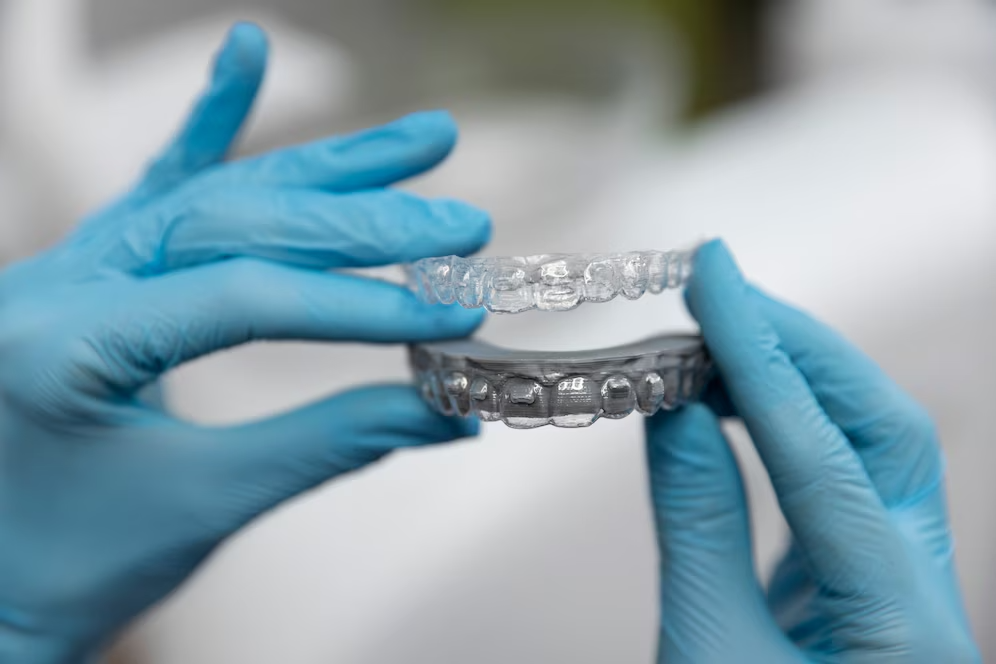
Is Your Child a Candidate for Invisalign?
Age Considerations
Invisalign is suitable for children who have all their permanent teeth, usually around the age of 7 and older. Early intervention can sometimes prevent more severe orthodontic issues in the future. Starting treatment at a younger age can also take advantage of the natural growth of a child’s jaw, making it easier to guide teeth into their proper positions.
Common Dental Issues Addressed
Invisalign can address a variety of dental problems, including crowded teeth, gaps, overbites, underbites, and crossbites. This versatility makes it a great option for many children with different orthodontic needs. An orthodontist can determine if Invisalign is the right solution for your child’s specific needs by conducting a thorough examination and discussing the desired outcomes. Moreover, Invisalign aligners can also be effective in correcting minor relapses from previous orthodontic treatments, ensuring long-term dental health.
Comparing Invisalign with Traditional Braces
Aesthetic Differences
One of the main reasons parents and kids prefer Invisalign over traditional braces is the aesthetic appeal. The clear aligners are much less noticeable than metal braces, which can boost a child’s confidence during treatment. This can be especially important for kids and teens who are self-conscious about their appearance. Invisalign allows them to smile without feeling embarrassed about their orthodontic treatment.
Treatment Duration
The length of treatment with Invisalign can vary, but it often takes about the same time as traditional braces. However, some cases might see faster results due to the precision of the aligner system. Each set of aligners is designed to make slight adjustments to the position of the teeth, which can result in more efficient treatment. Regular check-ups ensure that the treatment is progressing as planned and adjustments can be made as necessary.
Cost Comparison
While Invisalign can be more expensive than traditional braces, many find the additional cost worthwhile for the comfort and aesthetic benefits. Invisalign aligners are custom-made using advanced technology, which can contribute to the higher cost. However, the convenience and lower impact on daily life often justify the investment for many families. It’s important to consult with your orthodontist about payment plans and insurance coverage.
Caring for Invisalign Aligners
Cleaning Instructions
Keeping the aligners clean is crucial for oral health. Aligners should be rinsed and brushed with a soft toothbrush daily to remove food particles and bacteria. Special cleaning kits are available that can help maintain the aligners’ clarity and hygiene. These kits often include cleaning crystals or tablets that can be dissolved in water to soak the aligners, ensuring a deeper clean. It’s also important to avoid using toothpaste on the aligners, as it can be abrasive and cause scratches, leading to potential bacteria buildup.
Dos and Don’ts
Do encourage your child to wear the aligners for at least 20-22 hours a day to ensure the treatment progresses as planned. Wearing the aligners consistently is key to achieving the desired results within the estimated time frame. Don’t allow them to eat or drink anything other than water while wearing the aligners to avoid staining and damage. Foods and beverages can discolor the aligners and compromise their effectiveness. Make sure your child removes the aligners during meals and snacks, and always brush their teeth before reinserting the aligners to maintain optimal oral hygiene.
Potential Challenges and Solutions
Handling Discomfort
Some initial discomfort is normal as the teeth begin to move. Over-the-counter pain relievers and a soft food diet can help manage any soreness. Using orthodontic wax on any sharp edges of the aligners can prevent irritation to the gums and cheeks. Encourage your child to stay hydrated, as dry mouth can exacerbate discomfort. It’s also helpful to remind them that this discomfort is temporary and a sign that the aligners are working to improve their smile.
Ensuring Compliance
Kids may forget to wear their aligners consistently. Setting reminders and creating a routine can help ensure they wear them as required. Consider using smartphone apps designed for Invisalign users that send notifications to remind your child to put their aligners back in after meals. Creating a chart or reward system can also motivate them to stick to their treatment plan. It’s important to explain the benefits of wearing the aligners consistently, helping them understand how compliance directly impacts the speed and success of their treatment.
Managing Lost Aligners
Lost aligners can delay treatment. Having a spare set and contacting the orthodontist immediately for a replacement can minimize disruption. To prevent aligners from being misplaced, establish a specific, safe place for your child to store them when they are not being worn, such as a dedicated case. Educate your child on the importance of keeping track of their aligners, and encourage them to avoid wrapping them in napkins or leaving them in places where they might be forgotten.

Parents’ Role in Invisalign Treatment
Encouraging Consistent Wear
Parents play a crucial role in reminding their children to wear their aligners and follow the treatment plan. Positive reinforcement and setting a good example can go a long way. Create a daily routine that includes specific times for inserting and removing the aligners, such as after meals and before bed. Using visual aids, like a calendar or a chart with stickers, can help track your child’s progress and make the experience more engaging.
Monitoring Oral Hygiene
Ensuring that your child maintains excellent oral hygiene is vital. Regular brushing, flossing, and cleaning of the aligners help prevent cavities and gum issues. Supervise their brushing to ensure they reach all areas of the mouth, especially around the attachments that Invisalign aligners sometimes require. Consider investing in an electric toothbrush, which can be more effective in removing plaque.
Scheduling Regular Dental Visits
Regular visits to both the orthodontist and the dentist are essential to monitor progress and maintain overall oral health. These visits allow the orthodontist to make necessary adjustments to the treatment plan and address any issues that may arise. They also provide an opportunity to ensure that the aligners are fitting correctly and making the expected progress. Dental check-ups are equally important to catch any potential cavities or gum problems early.
Conclusion
Invisalign offers a modern, convenient, and aesthetically pleasing alternative to traditional braces for kids. With its numerous benefits and the use of advanced technology, Invisalign can help your child achieve a beautiful, confident smile. If you’re considering orthodontic treatment for your child, consult with an orthodontist to see if Invisalign is the right choice for you.
Frequently Asked Questions
How Long Does Treatment Take?
The duration of treatment varies, but it generally ranges from 12 to 18 months, depending on the complexity of the case.
Are There Any Dietary Restrictions?
Unlike traditional braces, Invisalign does not have dietary restrictions since the aligners are removed during meals. This allows kids to enjoy their favorite foods without worry.
What Happens if an Aligner is Lost?
If an aligner is lost, contact your orthodontist immediately. They may recommend wearing the previous set while a replacement is ordered.

